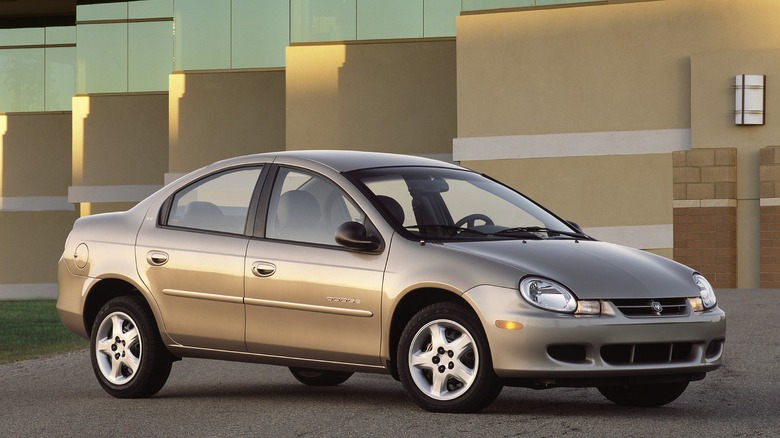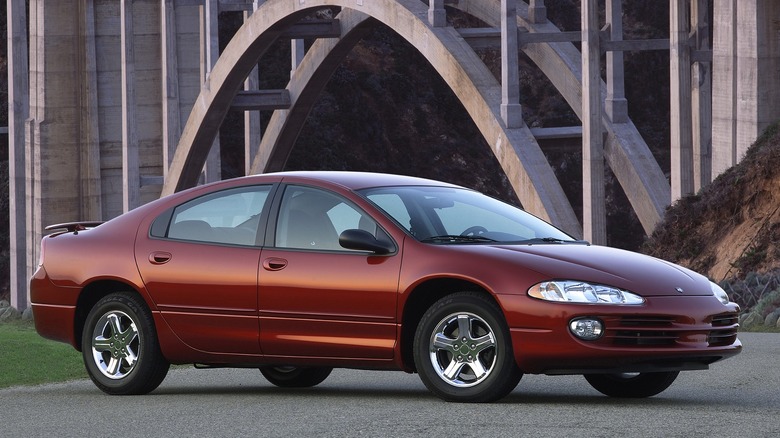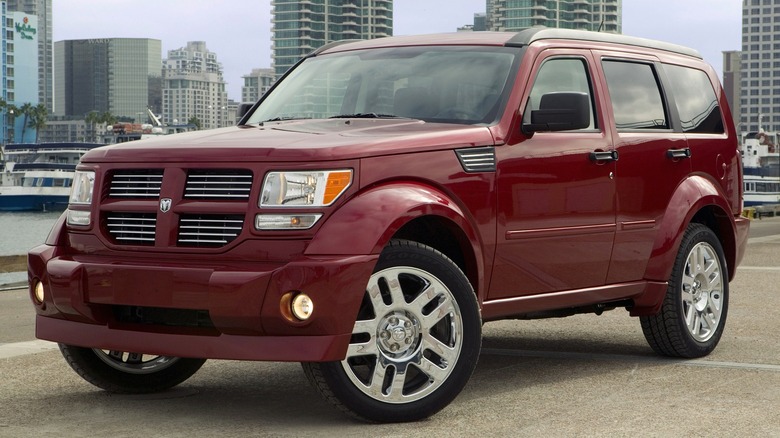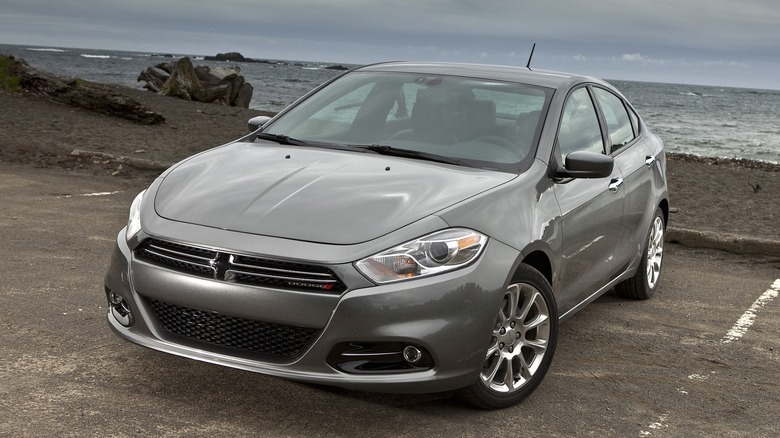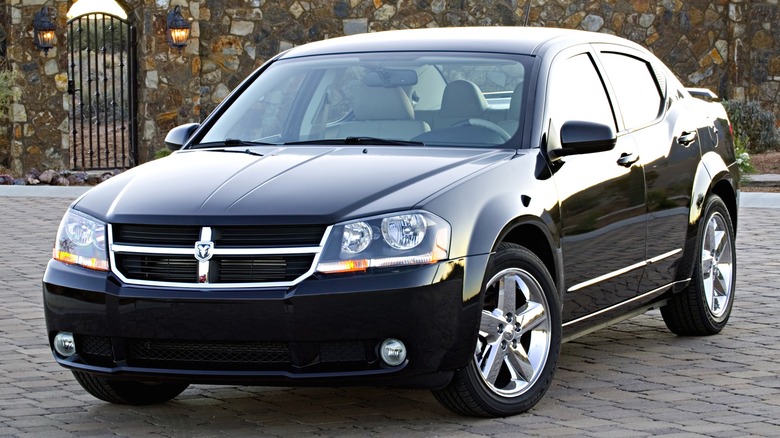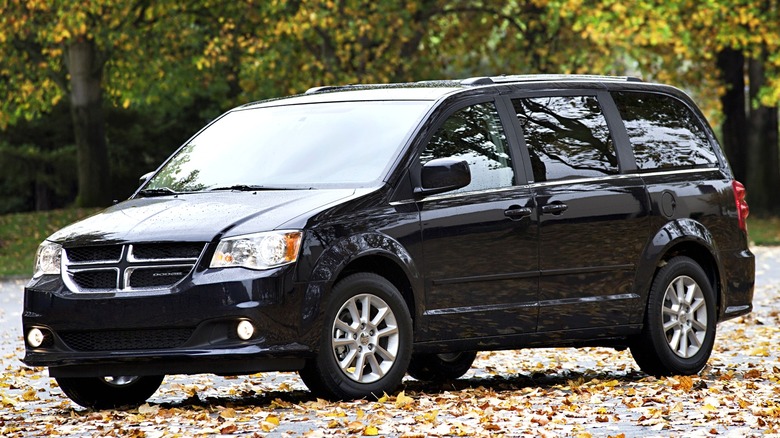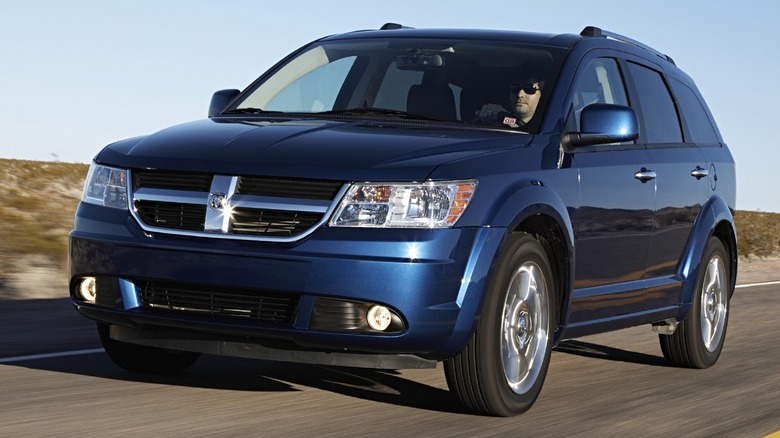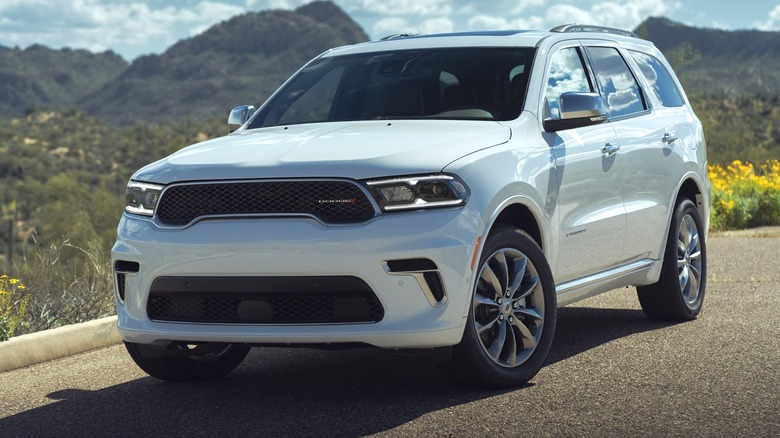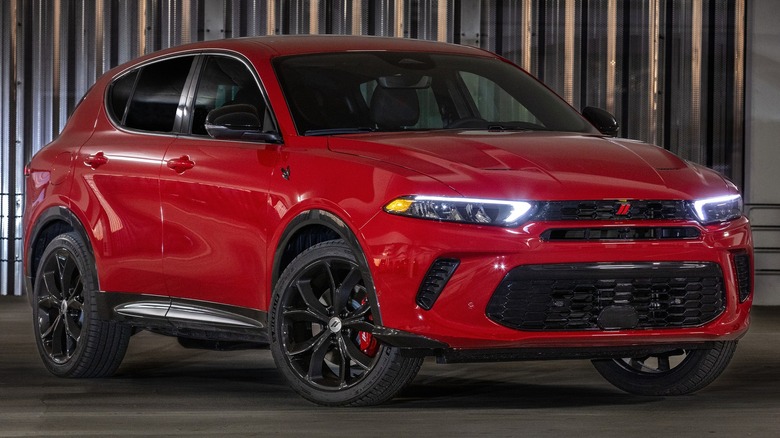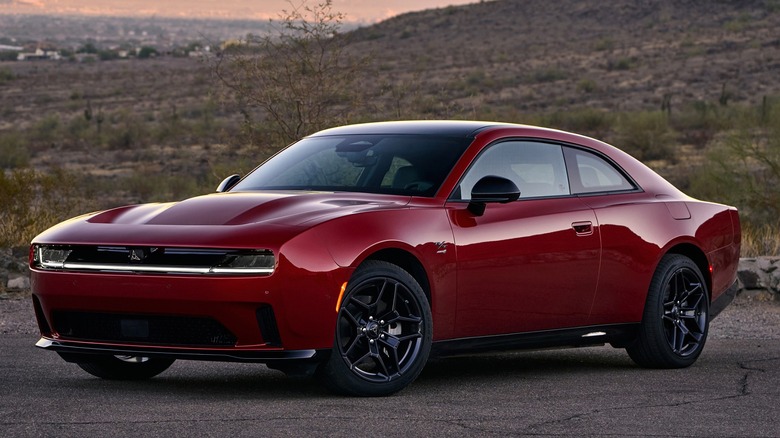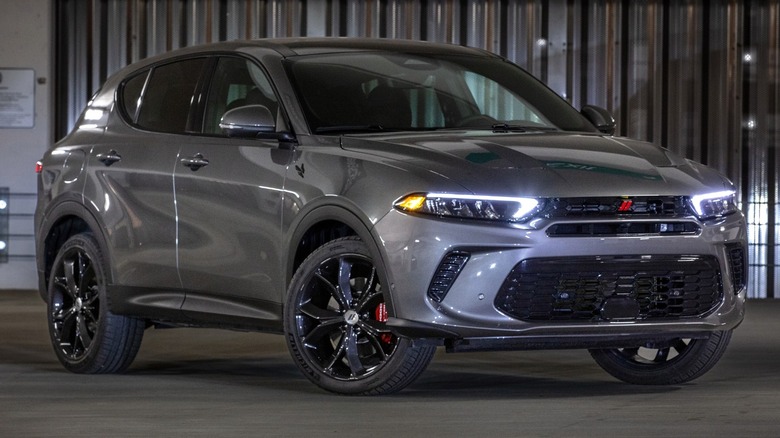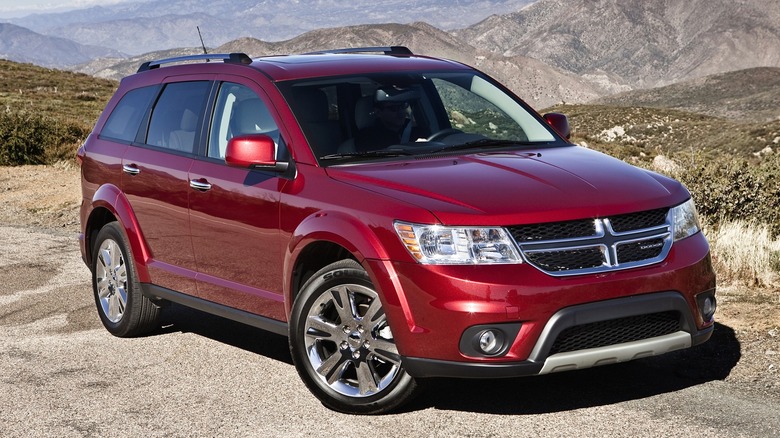12 Dodge Models With Terrible Resale Value
Buying a new car is one thing. Holding onto its value is a whole different game, especially if you're looking at Dodge. Sure, the brand's known for power, attitude, and dope designs — no one's arguing that. But when it's time to sell or trade in? That edge doesn't always carry over to resale value.
While Dodge isn't the worst out there, it's definitely not leading the pack, and that's something a lot of buyers won't realize until it's too late. In this list, we're taking a closer look at which of the brand's models lose value the fastest, how steep the drop-off really is, and how they perform once that "new car" glow wears off. Mileage, condition, demand, and whether the model's been discontinued all play a part in what it's worth down the road. And since things tend to level out a bit around the five-year mark, a used 2023 model might be your safest bet.
It's not always about reliability — you know. Sometimes it's just bad timing, outdated tech, or how fast the market moves. Even cars with solid specs can be tough sells if the buzz fades too quickly. So if you're eyeing a Dodge and thinking long term, here's a breakdown of the ones that take the hardest resale hits.
Dodge Intrepid
At first glance, the Dodge Intrepid looked like it had what it needed to win people over. It had space, style, and surprisingly decent fuel economy for its size — 18 mpg in the city and 28 on the highway. For a big sedan in the late '90s and early 2000s, that wasn't bad at all. But even with all of that going for it, that early promise still didn't stick. Over the years, the Intrepid quietly became one of Dodge's most disappointing long-term plays — and unfortunately, the resale market remembers.
Its 2.7-liter V6 became known for engine sludge issues, and that led to sudden, costly failures — even for owners who kept up with maintenance. Then came transmission headaches, cracking dashboards, and a growing list of complaints that just never went away. By the time Dodge pulled the plug in 2004, the damage was already done — so much so that even used ones were red-flagged.
According to Kelley Blue Book, a 1998 model can bring in around $1,317 on a good day, with trade-in offers often sitting near $631. Even the ones in good shape top out near $2,700 in high retail, and don't think it gets better in later models, because it doesn't. The 2001 model? That one rarely climbs past $315 and can dip as low as $235 on trade-in.
Dodge Neon
The Dodge Neon had one job: be a cheaper alternative to the Civic and Corolla. And honestly, it actually pulled it off. Launched in 1995, the car came with a small 2.0-liter engine, 132 hp, room for five, and a price that made it accessible to anyone. Dodge stuck with it for over a decade, with only a few mild updates in years like 2000 and 2003. But its decent mileage and minor tweaks weren't enough to keep it afloat and over time, that started to haunt its resale value.
Even when Dodge tried to dress it up with sportier trims like the R/T and the turbocharged SRT-4, the Neon still couldn't shake its budget-car roots. Its reliability was hit or miss and its build quality didn't age well, and meanwhile its competitors kept raising the bar. Buyers caught on.
Today, the resale numbers are pretty rough across the board. A 2005 model often struggles to reach $1,700, with trade-ins barely reaching more than $500. Some 2004 models have dipped as low as $224, depending on condition and mileage. Step back a bit to a 1998 Neon, and you're looking at resale values near $1,100, while trade-in offers often come in under $450.
Even the Dodge Dart — which wasn't exactly a resale darling too — holds onto its worth better. While Dart resale numbers often stretch into the $14,000 range, the Neon tops out well below that, barely cracking $6,047 at best.
Dodge Nitro
The Dodge Nitro was one of those SUVs that tried to sell itself on attitude alone. It was boxy and bold, with a name that sounded ready to explode onto the scene. And when it first hit the road back in 2007, it kind of did. Built on the Jeep Liberty platform, it came with V6 grunt, optional four-wheel drive, and aimed for that in-between sweet spot of compact and mid-size SUVs. Still, none of that saved it from tanking in resales, and before you know it, the Nitro was discontinued in 2011.
Let's talk numbers. The 2011 Nitro started off with an MSRP hovering between $21,590 and $28,995. Not cheap. But fast-forward to now, and you would be lucky to even get a fraction of that back. Kelley Blue Book puts private sale values at just $4,021 — down from $6,145 in 2022. Trade-in values are even tougher to swallow, sinking to just $1,206. Edmunds tells a similar story that even a spotless example won't you fetch more than $7,306 from dealers — and that's only for the best-case scenarios.
Earlier models? They've fared even worse. A 2007 Nitro can bring in as little as $604 on trade-in — pocket change compared to its original sticker price. On average, a used Nitro now pulls around $5,656, which is over 75% lower than the average used car on the market. For context, that's light-years behind more dependable rivals like the CR-V or RAV4.
Dodge Dart
When Dodge brought the Dart name back in 2013, it seemed like a solid comeback. It had a sleek design, a Fiat-based chassis, decent fuel economy, and a turbocharged engine, all packaged to compete in the compact segment again. On paper, it made so much sense. It promised up to 36 mpg on the highway and offered 160 hp out of a 2.0-liter turbo at the base trim level. But despite those effort, the car never quite hit the mark. By 2016, the Dart was discontinued again. Ever since then, its resale value has only gotten worse.
Take the 2016 model, for example. According to Kelley Blue Book, it dropped from a resale value of $8,610 in 2022 to just under $3,950. Trade-in offers fell even harder — from $7,016 to around $2,000 — with one steep dip wiping out nearly $3,000 in a single year. Edmunds backs it up with trade-ins ranging wildly, from $2,354 for beat-up units to $10,933 in pristine shape. And even at best, the Dart rarely stretches past $14,960.
Dodge Avenger
The Dodge Avenger was never a bad-looking car. It had the looks, solid engine options — including a punchy 3.6-liter V6 — and enough edge to stand out in the crowded mid-size segment. On paper, it wasn't a bad deal at all. But as time went on, it became clear that looks and specs weren't just enough. First as a sporty coupe in the '90s and then reborn in 2008 to take over from the stratus, the Avenger never quite found its place — especially among heavyweights like the Malibu, Camry, and Fusion.
Now, a 2010 Avenger sits around $3,310 in resale, with trade-ins hovering near $1,250. The 2013 model? That one has dropped to about 45% since the past three years now. Even early sedans like the 2008 SXT aren't much better — retails max out around $3,333, while trade-ins slip below $1,300. Go back to the original 2000 coupe, and you will be looking at $1,560, in resale and maybe $710 on trade-in — if not.
After selling out close 100,000 units in 2012 and 2013, interest dropped fast. And by 2014, Dodge pulled the plug on the avengers. Focus was then shifted to models with more staying power — like the Charger and even the Dart — while the Avenger quietly bowed out.
Dodge Grand Caravan
The Grand Caravan was for a time the default choice for most people who just needed something that worked. It had space, sliding doors, and a budget-friendly price tag — nothing fancy, but got the job done. Unfortunately, this is also one of the worst when it comes to holding its value.
For instance, in just five years, the 2019 model lost over 60% of its original value — more than $14,000 gone. Edmunds puts resale between $9,015 and $17,225, and trade-ins dipping to as low as $3,795. Stretch it to a full five-year span, and you're looking at over $9,200 in lost value. The 2016 isn't any prettier: resale around $6,054, trade-in offers still stuck near $3,795, and annual value drops topping at $1,600. Even the 2020, the final model, has already lost more than half its value — now worth just $17,243 used.
And the thing is, it really wasn't a bad van. With 20/17/25 mpg, Stow 'n Go seating, and rear-seat entertainment, it checked plenty of boxes for families. This was arguably a Dodge model ahead of its time, but it just wasn't the market wanted. Plus, there were too many of them, and that overexposure, paired with Dodge's weak resale reputation, sealed its fate.
Dodge Journey
If you were hunting for a three-row SUV under $24,000, the Dodge Journey looked like a steal. It had space, decent cargo room, and just enough comfort to check the "family car" box. Some even argued it had the best looks out of Dodge's SUVs. But still, while the rest of the segment kept moving forward, the Journey stood still and buyers eventually caught on.
By 2020, it felt like Dodge had quietly given up on it. The V6 disappeared, trims were slashed, and what remained was a tired four-cylinder engine paired with a four-speed automatic that felt ancient even as of then. The 2020 went on to lose about 44% of its value in just three years. Today, resale hovers a little over $13,000, with trade-ins slipping under $10,000. Older models have taken even bigger hits. The 2017 dropped around 50% in three years, and the 2018 isn't doing much better, struggling to stay above $8,000.
Dodge Durango
The Dodge Durango has always had street presence. It looks tough, sounds mean, and can tow with the best of them — especially if you're eyeing a V8. It's part muscle car, part family truck, and for some, that's enough. But when you shift focus to long-term value, the Durango starts to stumble.
Let's say you pick up a new 2024 model at around $83,627. In the first year alone, you might watch $11,642 vanish. Stick with it for five years, and depreciation creeps up to nearly $25,200 — roughly 65% of its original value gone. Even over a 10-year stretch, the trend doesn't slow down, with annual losses ranging anywhere from $5,154 to $1,237. At trade-in, well-kept models top out around $33,051, while rougher trims sink much lower.
Insurance alone averages about $2,400 a year, quietly stacking into your total ownership cost. Add that to the mix of outdated tech, so-so fuel economy, and safety features that are lagging behind the competition, and the Durango struggles to make a case for itself on the resale lot.
Dodge Hornet (plug-in hybrid)
Next is the Dodge Hornet Plug-In Hybrid. This one came in hot — sporty looks, 288 hp, AWD, and all the full buzz of Dodge's electrified push. With a six-speed automatic transmission and some solid spec numbers (77 MPGe in hybrid-electric mode, 26 mpg on gas) under its belt, the Hornet PHEV had the right ingredients to make a splash in the compact hybrid SUV space. But while it showed up looking like a threat, the resale numbers tell a different story — and not in its favor.
Say you start with the 2024 Hornet R/T AWD with an MSRP that clocks in around $41,000. Within a year, you will be staring down at it at $32,344 on average, while some drop to as low as $20,375 on trade-in. Even at dealer retail, the most you're likely to get is $24,740. Add four more years, and its value should be at $21,620 according to Edmunds, meaning you're potentially out close to $29,000 in depreciation alone.
Plus, when stacked against its peers, the Hornet's numbers are underwhelming. Most subcompact hybrid SUVs drop about 47.2% over time; the Hornet clocks in slightly better at 45.7%. That then leaves you with an average resale hovering around $22,605 — a tough pill to swallow for a vehicle that hasn't even made it through its first warranty cycle.
Dodge Charger
The Dodge Charger is loud, aggressive, and proudly holds to its muscle car roots. That raw attitude is exactly why it turns heads — and why it's also one of Dodge's most successful nameplates in the U.S. And for a lot of drivers, the attitude alone makes it worth every penny. But the Charger's street appeal doesn't always translate to resale strength, and once years roll by, its value starts to fade faster than some might expect.
A 2023 Charger can trade anywhere from $20,650 to as high as $64,906, depending on trim and condition. But don't let that top number fool you, though, because the average drop over five years hovers around $13,100, pushing most resale values just under $40,000. Step back to a 2019 model, and things get even rougher. Trade-ins drop to around $11,946, with resale maxing out at about $14,274. iSeeCars places a three-year-old Charger at an average of $27,126, and by year five, you'll likely be shopping for used ones in that same range — sometimes higher, if you're lucky.
Dodge Hornet
The Hornet name didn't come out of nowhere. From the Hudson Hornet's NASCAR glory days to the underdog charm of the AMC Hornet in the '70s, it's a badge with history. So when Dodge revived it in 2023, expectations weren't exactly low. And to their credit, they came out swinging — turbocharged engines, AWD, plug-in hybrid options (talked about it earlier in the list), and a design that finally broke the mold in a sea of generic crossovers. But if there's one area where the Hornet fizzles, it's resale — and the numbers aren't kind.
A 2024 Hornet R/T AWD, even in good shape, is expected to lose about $19,187 over five years — roughly 60% of its value. Most of that hit come in early. Year one alone can cost you $10,859 in depreciation. By year five, it's down to just $15,901. CarEdge paints an even bleaker picture, projecting a 65% drop with resale landing around $14,377. And if you hang on to it longer? the Hornet could shed up to $31,030 over a ten-year span. When your MSRP is floating above $40K, that stings.
Just two years in, and the 2023 Hornet has shed around 43.5%, even used listings have also dipped well below $30,000. It's not that the Hornet isn't a good car — it is. In fact, outside of the Challenger, it holds value better than most Dodges. But when lined up next to rivals like the Toyota RAV4 Hybrid or Honda CR-V Hybrid, the gap is clear.
Dodge Challenger
The Dodge Challenger may not dodge depreciation entirely, but it holds its ground far better than most of its Dodge siblings. In production from 2008 to 2023, the Challenger always leaned into its strengths: retro looks, raw muscle, and just enough everyday usability. And that steady identity paid off, not just with loyal fans, but in resale value, too.
On average, a new Challenger loses about 36.8% of its value over five years. That may sound steep, but remember, a typical car drops closer to 44%. Even rivals in the coupe game don't always do better. In real numbers, that's around $8,804 gone in five years. For the 2023 model, Kelley Blue Book estimates a first-year dip of $11,912, with today's trade-ins landing around $19,473. For a muscle car, that's a win and it is way better than other Dodges that struggle to keep even half their value. After two years, the Challenger still clings to roughly 63% of its original price tag. That's rare.
Even older models aren't doing too badly themselves. The 2020 Challenger for example has dropped to about $11,318 in three years, with resale sitting around $15,210 and trade-ins near $14,000. The challenger is not perfect, but it's firmly middle of the road for coupes in that class — and for Dodge, that's a respectable place to be. And that's all for this list.
Methodology
To figure out which Dodge models have the worst resale value, we looked at real-world data from sites like CarEdge, iSeeCars, Kelley Blue Book, and Edmunds. We focused on how much value each model loses over time, how quickly that drop happens compared to its original MSRP, and how it performs in the used market overall. We also factored in things like vehicle condition, mileage, buyer demand, and whether the model has been discontinued—all of which can seriously affect what a car is worth down the line.
In addition to depreciation percentages, we reviewed trade-in values, private party resale trends, and how each model stacks up against segment competitors. We paid close attention to models with steep first-year losses, as well as those that continue to decline more aggressively than others over time.
